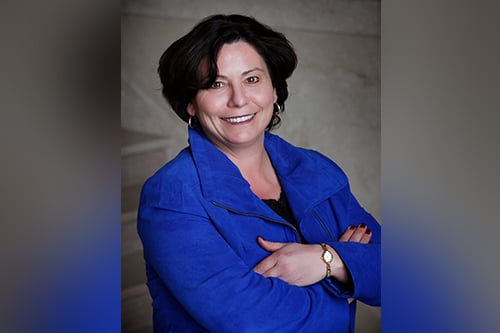

The insurance industry is “awash in data” today, according to KPMG’s report, “Enabling the future of underwriting,” and, as a result, underwriters are under pressure to gather the right mix of data and use it to assess risks accurately, personalize customers’ experiences, and issue policies as quickly as possible.
Some insurers are ahead of others when it comes to developing their underwriting tools, including Sun Life, which launched a business transformation initiative more than a decade ago to, among other things, update its electronic applications and Underwriting Rules Engine (URE), all in the name of an improved client experience (meaning both the end customers as well as advisors).
Sharon Smith (pictured), Sun Life’s VP, chief underwriter and claims risk officer, joined the organization in 2008 to be a part of this initiative and gave Insurance Business a peek under the hood of how underwriting at Sun Life has evolved over recent years.
“We put in a new rules engine, and the rules engine is a software system that differentiates risk based on decision trees and databases of defined rules, and those old engines from the early 2000s were not really AI-based,” she explained. “They were more decision-based engines.”
Thanks to this development, Sun Life now boasts the highest straight-through-processing rates in Canada, with 30% of the life and critical illness applications it receives approved by the engine without being touched by an underwriter, according to Smith. That amounts to a not-insignificant 45,000 applications a year.
“Alongside that journey, as we were updating our underlying technology, we also had a very strong focus on looking at underwriting requirements. Over the last decade, we’ve made significant changes to the evidence that clients are required to submit to us,” said Smith.
The grid once used in underwriting for Sun Life products included 64 cells that accounted for age (columns) and the total amount being applied for (rows) that would then indicate what information the insurance company needed from the applicant, such as blood, urine, ECGs, paramedical and medical exams, saliva, and other requirements.
From 64 cells in this grid, the company has since merged and expanded cells as well as increased limits to create a grid of 25 cells. Additionally, over the past decade, Sun Life has reduced the number of people who are required to provide bodily fluids. This is a marked change from 2008, when it tested over two-thirds of its clients.
“Now, we’re testing just over 40% of our clients,” said Smith. “We also made a significant change to our requirements in January 2017. We took a really bold step and no longer require clients to give us oral fluids, standalone urines, resting ECGs, stress ECGs, and medical exams. In our grid now what you’ll see is blood. You’ll also see tele-interviews, and the tele-interview is an alternative source to the advisor completing the application question – it’s a disinterested third party who is collecting health information over the phone.”
Moving forward, if all that’s left in the cells are primarily blood profiles, the question then becomes, what can Sun Life do to either replace or limit blood profiles?
“Working with our data scientists [and] based on the tremendous amount of electronic data that we have captured over the last decade, we have built algorithms that will determine – based on a client’s disclosure – whether or not we need blood from that client, which is pretty exciting and interesting and, for us, a first step into personalizing underwriting requirements based on disclosure,” Smith told Insurance Business.
Through a variety of tech-related pilots, Sun Life is also helping clients achieve both financial security and healthier lifestyles. In a pilot program in Hong Kong, for instance, the company is offering standard life insurance rates to clients with diabetes who attend diabetes clinics regularly and manage their condition successfully for two years. These clients would typically have to pay higher premiums. Meanwhile, in Canada, Sun Life’s online assistant Ella helps clients make the best use of their employee benefit plans and maximize their retirement savings, but she also can help anyone – Sun Life plan member or not – find a medical professional, whether they need a dentist, physiotherapist, chiropractor, or anything in between.
Smith says that she also believes wearables will come into play more in the life insurance space as times goes on, though she sees other technology likewise having an impact.
“There’s potential to really disrupt the client experience, and perhaps negatively, with things like retinal scans. Google has come out with a retinal scan that can predict with 70% accuracy the risk of a heart attack or stroke in the next five years,” she said. “As those technologies come to the forefront, I think insurance companies have to look at it both from the perspective of, do you really want to ask your client for a retinal scan [and] will clients select against the industry because they’ve had access to some of this newer technology?”
This approach, of taking the pulse of what people want from their life insurers, will continue to be central to underwriting developments going forward.
“[We’re] always keeping the client at the centre and trying to make it easier for them to access our products,” said Smith. “I think the trust comes from our ability to better service them than we have in the past by improving their experience. We’ve also been able to make many of these changes without negatively impacting the price of our products and I think that has gone a long way to help us grow our business over the last decade.”
